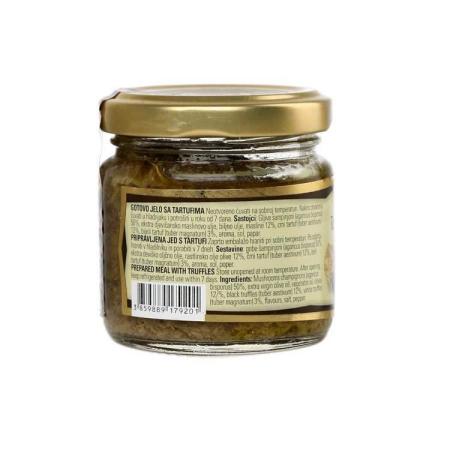
Objective:
With the fluctuation of truffle market, the prices of truffles for restaurants and/or for end consumers can be very variable. This implies the use of less expensive truffle based additions, such as truffle oils and tartufatas (mixture or mushrooms and truffle, used as side dishes, or as a main ingredient for truffle based pates and sauces). Since the odor of fresh truffles are volatile and more mild than their replacements (truffle oils), the objective of this text is to educate the end consumer on differences between the raw truffle material and processed ingredients found in grocery stores.
Context:
Odor composition of fresh black truffles (Tuber melanosporum and T. aestivum) mainly consists of ethanol (C2H5OH) and thiobismethane (C2H6S). Lately, a lot of half-processed/refined black truffles and truffle oils that can be found on grocery store shelves consist, among other substances, of 1% fresh truffles and truffle aromas. That truffle aroma is actually the odor made artificially from petroleum – 2,4-dithipentane or bis(methylthio)methane (C3H8S2). 2,4-dithiapentane is a volatile component of white truffle, some cheeses, milk, fish oils, shitake mushroom,s prawns and lobsters. In low quantities does not have an effect on human body.
Contacts:
Anton Brenko, antonb@sumins.hr
Further information:
Bellina-Agostinone, C., D’Antonio, M., Pacioni, G., 1987: Odour composition of the summer truffle, Tuber aestivum. Transactions of the British Mycological Society 88 (4), pp. 568-569.